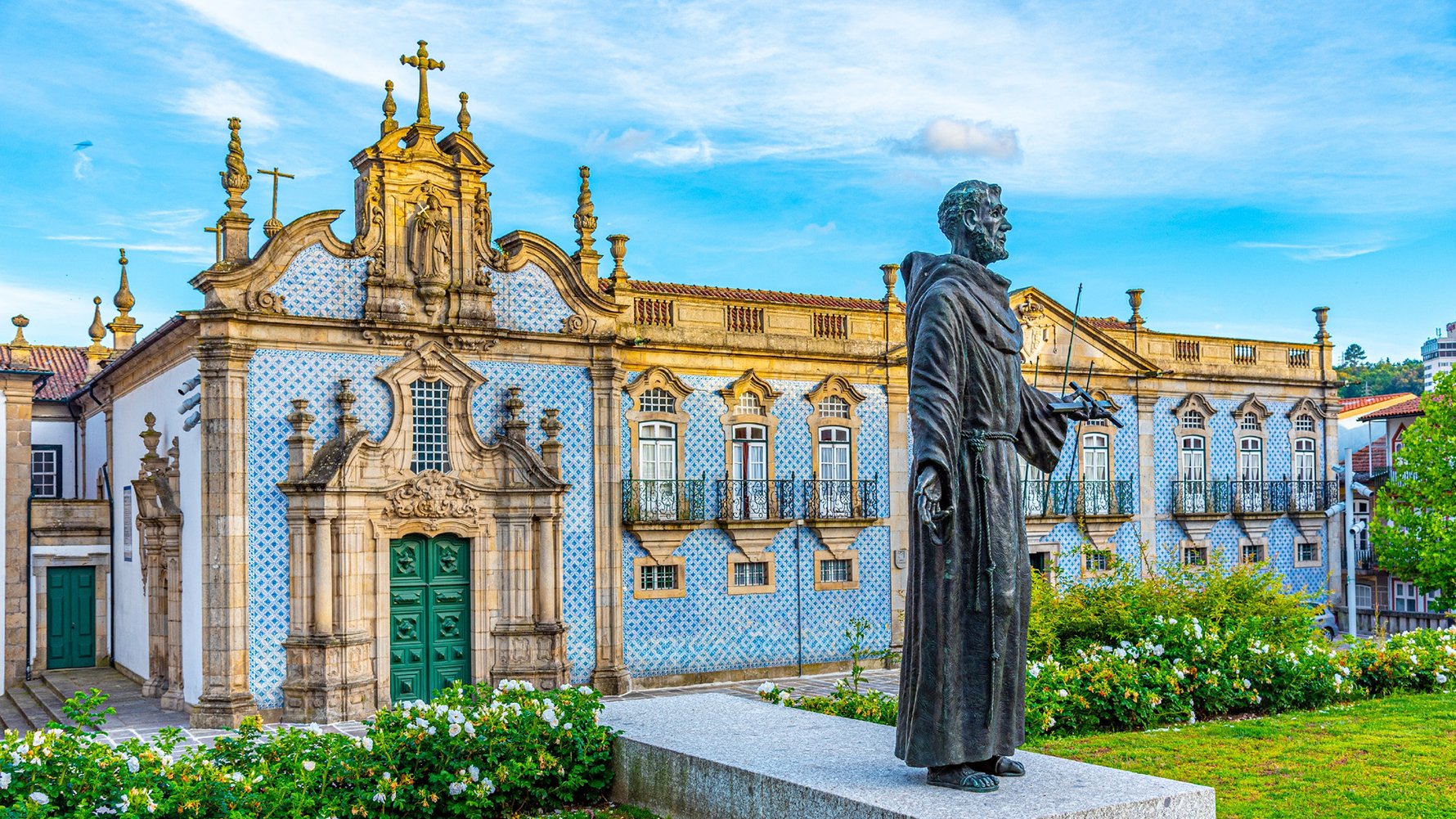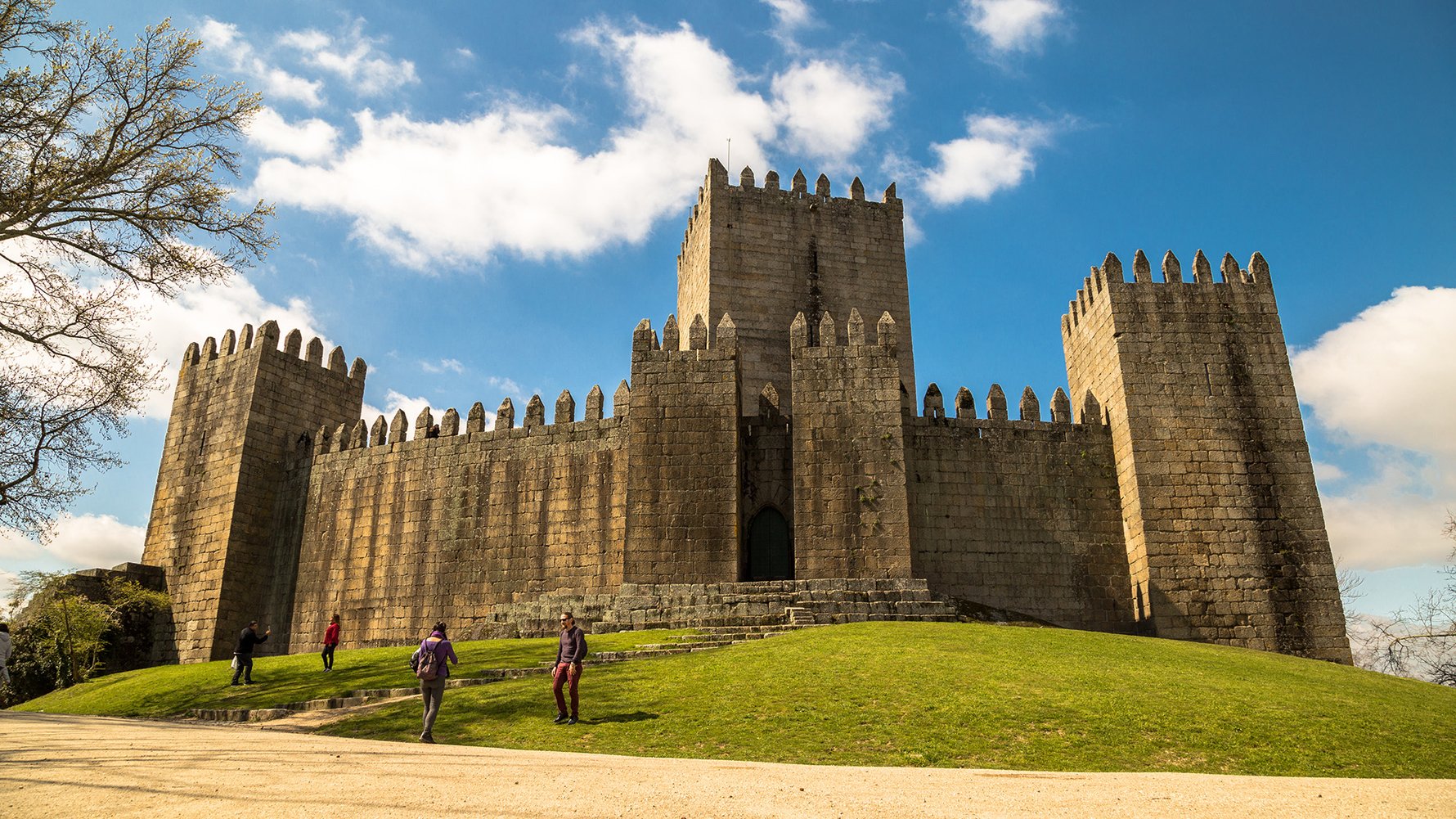Where to start in Guimarães? Smack-bang in the centre of course! The Largo da Oliveira is the heart of Guimarães, a pretty square with plenty going on and the usual masses of history waiting to be discovered. The reason for its name is pretty self-explanatory — there is a very, very old olive tree found here — but it is the cathedral that demands the most attention, the Igreja de Nossa Senhora da Oliveira to be exact. This is a 12th century convent church that is gorgeous both inside and out, so be sure to give it a look.

The main event in Guimarães is Guimarães Castle, an old as the hills (and located up one) fortress that is said to be where King Henriques was born. Built in the 11th century, the castle was largely neglected over the centuries once its military uses ran out, only for it to be lovingly restored in the modern age. The walk up to the castle is a joy, and the views are worth every bead of sweat.
Not too far from the castle lies the Palace of the Dukes of Braganza, a bit of a mouthful for a quite magnificent medieval estate. Classified as a National Monument since 1910, the palace has often worked as the official residence of the presidency, and it isn’t difficult to understand why. The palace is located within a gorgeous park, a quite marvellous spot to say the least.

Outside of wealth, history and spirituality, what is there to see in Guimarães? Well, there are a number of excellent museums and galleries here, with the Alberto Sampaio Museum standing out. Founded in 1928, the museum is established as a catch-all spot for art of all kinds, most of which came from the various pious organisations in the Guimarães region. It is quite impactful, to say the least.
Guimarães is the birthplace of Portugal, but there is a lot more to it than that. This is a thriving city of some 158,000 people, a town of considerable history but just as much excitement in its present and its future. The town itself is a UNESCO World Heritage Site, a must-visit when in the north of Portugal or any other part of the country. This is where it all started, after all.

